Creating or updating a scheduled manifest (via PVMIS user interface) (Transshipment - Import Part)
Actors | Shipping Agents |
|---|---|
Description | Creating or updating a scheduled manifest for a stopover |
Access to the creation of a scheduled manifest
To create a scheduled manifest for a stopover, there are 2 possibilities:
From the “Unloading operations” tab
From the stopover details screen
From the “Unloading operations” menu
Click on the “Unloading operations” tab under the Import menu:
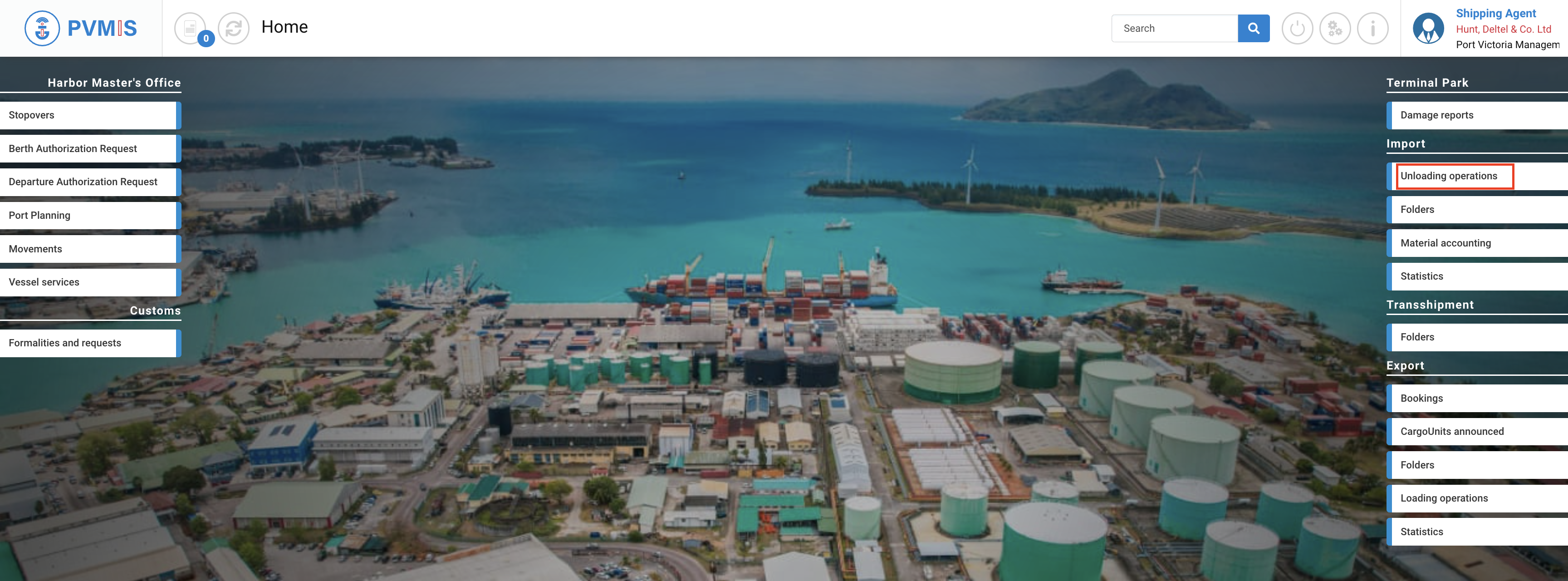
The list of unloading operations is displayed. Click on “Create Manifest” button:
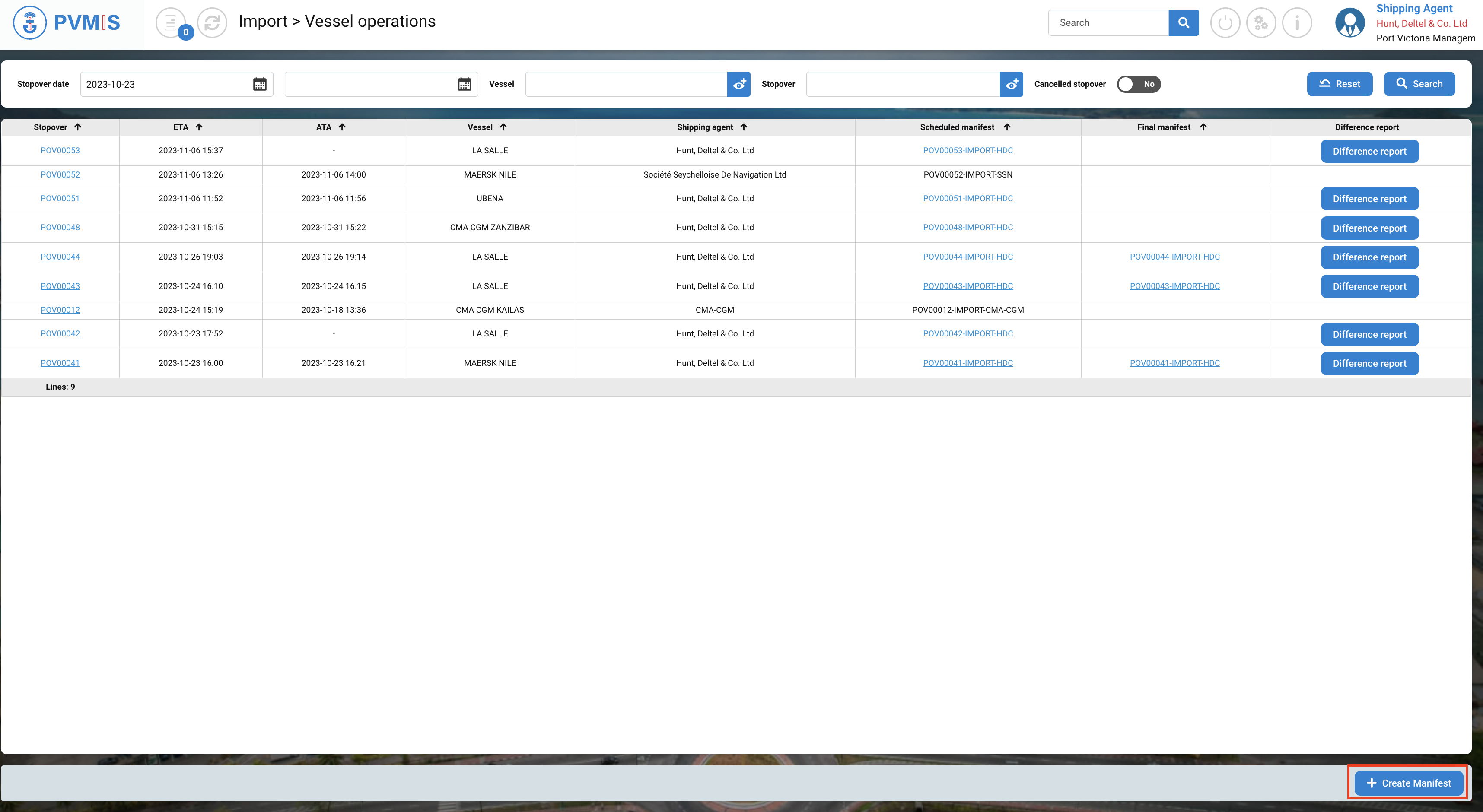
Select the Shipping Agent in charge of the manifest declaration for this stopover and enter the stopover code. Then, validate the creation.

You create an import scheduled manifest. Now, you need to fill it.
From the stopover details screen
Click on the “Stopovers” menu in the Harbor Master’s Office section:

The list of stopovers is displayed. Click on the desired stopover code:
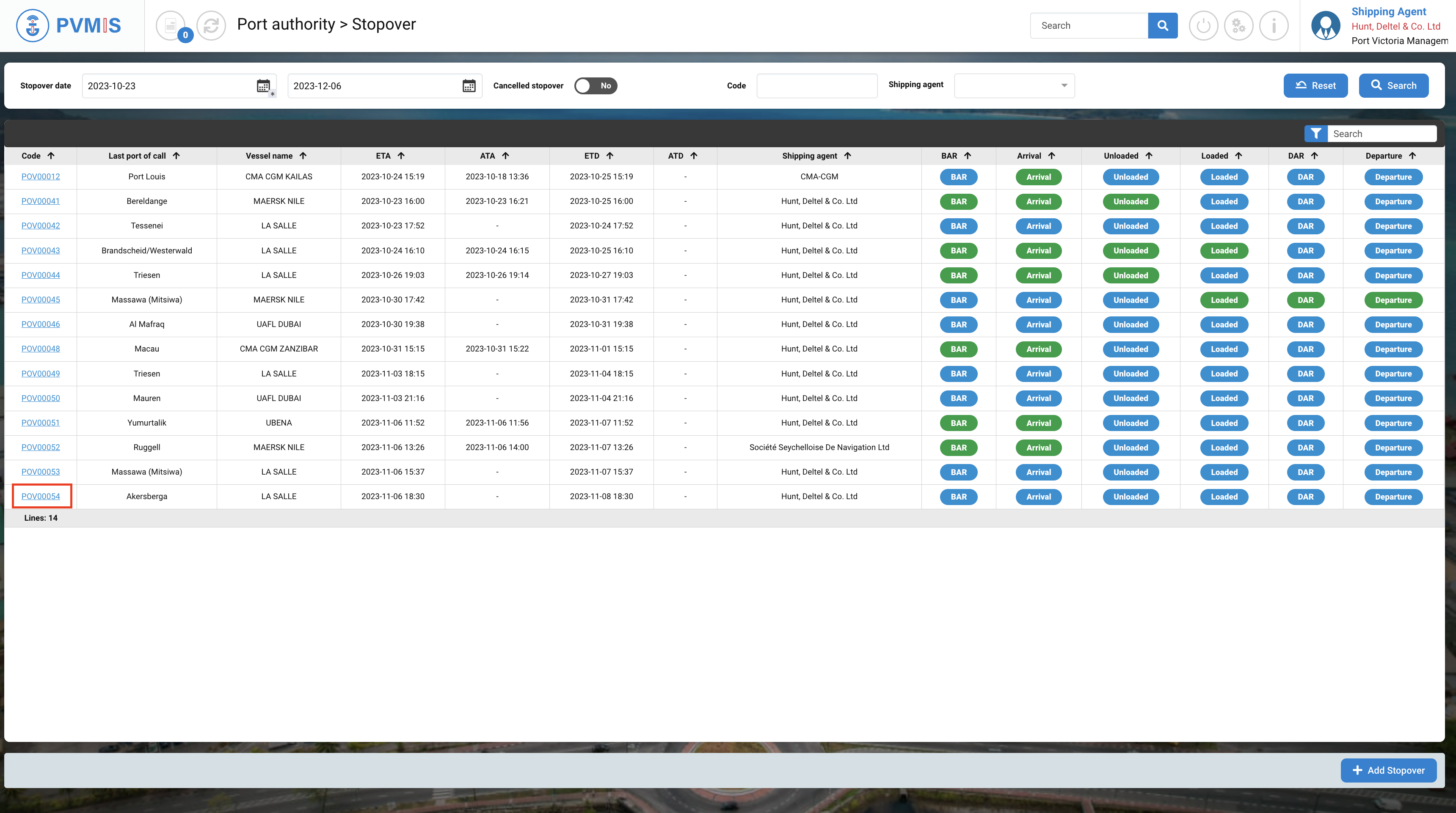
Details concerning the selected stopover are displayed. Click on “Create Manifest (Import)” link:

Complete the form and click on Validate button:

You create an import scheduled manifest. Now, you need to fill it.
Create scheduled manifest
Declare Bill of Landing (BLs)
Add BL (full)
To complete your import scheduled Manifest, click on the “Unloading Operations” tab under the Import menu:

The list of stopovers with their scheduled manifest is displayed. Click on the desired scheduled manifest:

The Scheduled Manifest information is displayed. In the BLs section, click on +Add BL (full) button to create, at the same time, the Bill of Lading (BL), BL item(s) and CargoUnits:

You are on the BL (full) form is divided in three section :
BL form
Designation of Third Party
BL items form
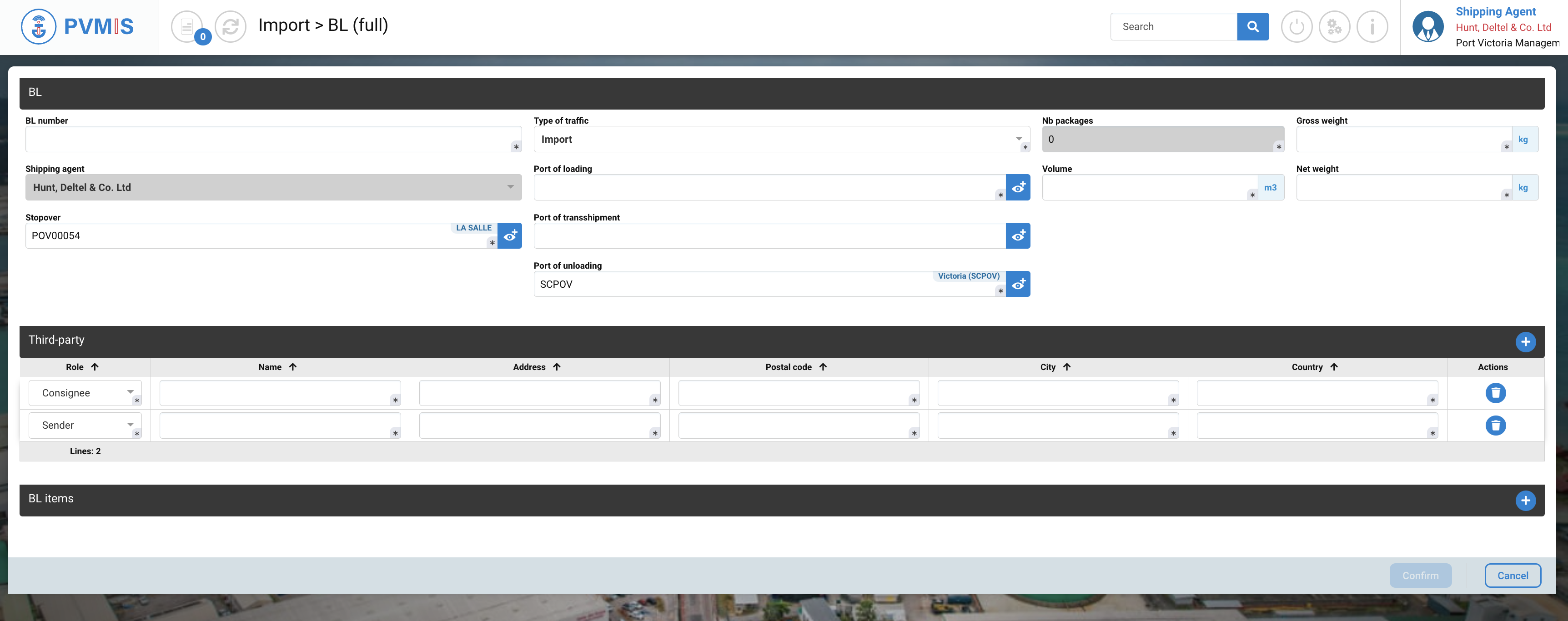
For the type of traffic field, select “Transshipment”
For the BL form you need to enter these fields :
Fields | Description |
|---|---|
BL number* | Corresponds to the code number of the BL. |
Type of traffic* | Pre-filled by Import BUT select Transshipment |
Nb packages* | Disabled field, it will be completed after the creation of BL items. |
Gross weight (kg)* | Gross weight of the BL container. |
Shipping agent | Pre-filed with the shipping agent information that was entered during the creation of the scheduled manifest. |
Port of unloading* | Port of loading of goods of this BL |
Volume (m3)* | Volume of the BL container. |
Net weight (kg)* | Net weight of the BL container. |
Stopover* | Pre-filled with the stopover code that was associated with the manifest. |
Port of transshipment* | In case of a transshipment process, you must inform the port of transshipment. This refers to the port through which the goods will pass or transit on their way to another port. |
Port of unloading* | This refers to the port of unloading the goods. |
For the Third -party, you must complete all information about the Sender and the Consignee.

In optional, you can add a freight forwarder and actual recipient.
You can delete a third-party line by the icon trash.

For the BL items, click on +.

Create a BL item
A Bill of Lading item or BL item represents a link between a Bill of Lading and a cargo unit. It is a goods line.
The BL item form is divided different section.
General BL Item information
Dangerous goods (optional)
Splitting
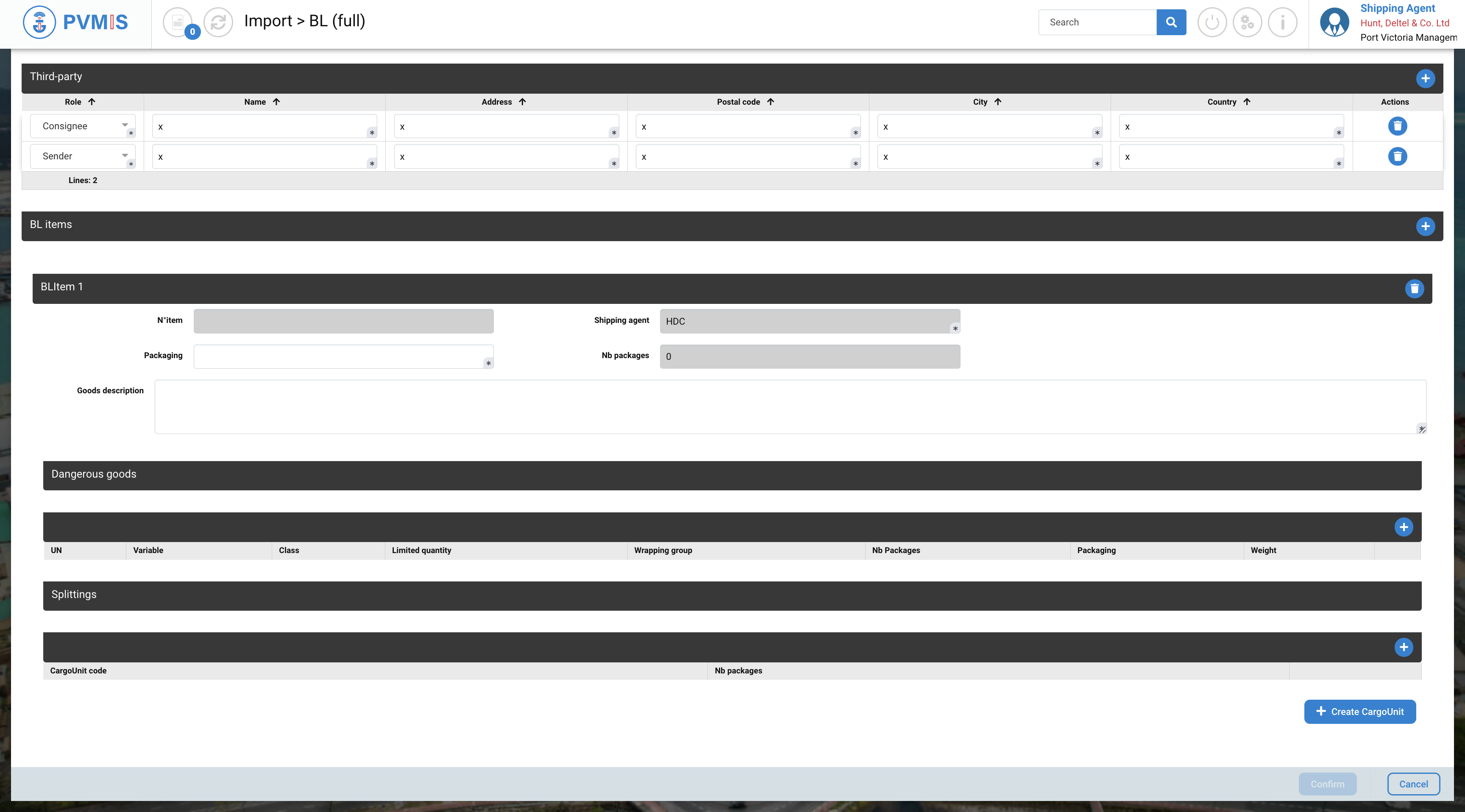
List of fields of BL item form:
Fields | Description |
|---|---|
N° item | Disabled field, will be complete after the validation BL. |
Shipping agent | Disabled and pre-filed by the shipping agent which was entered during the creation of the scheduled manifest. |
Packaging* | Type of package. |
Nb packages | Disabled field, will be complete after having informed the CargoUnit. |
Goods description* | Description of type of goods for example. |
You can delete the BL item using the trash icon.
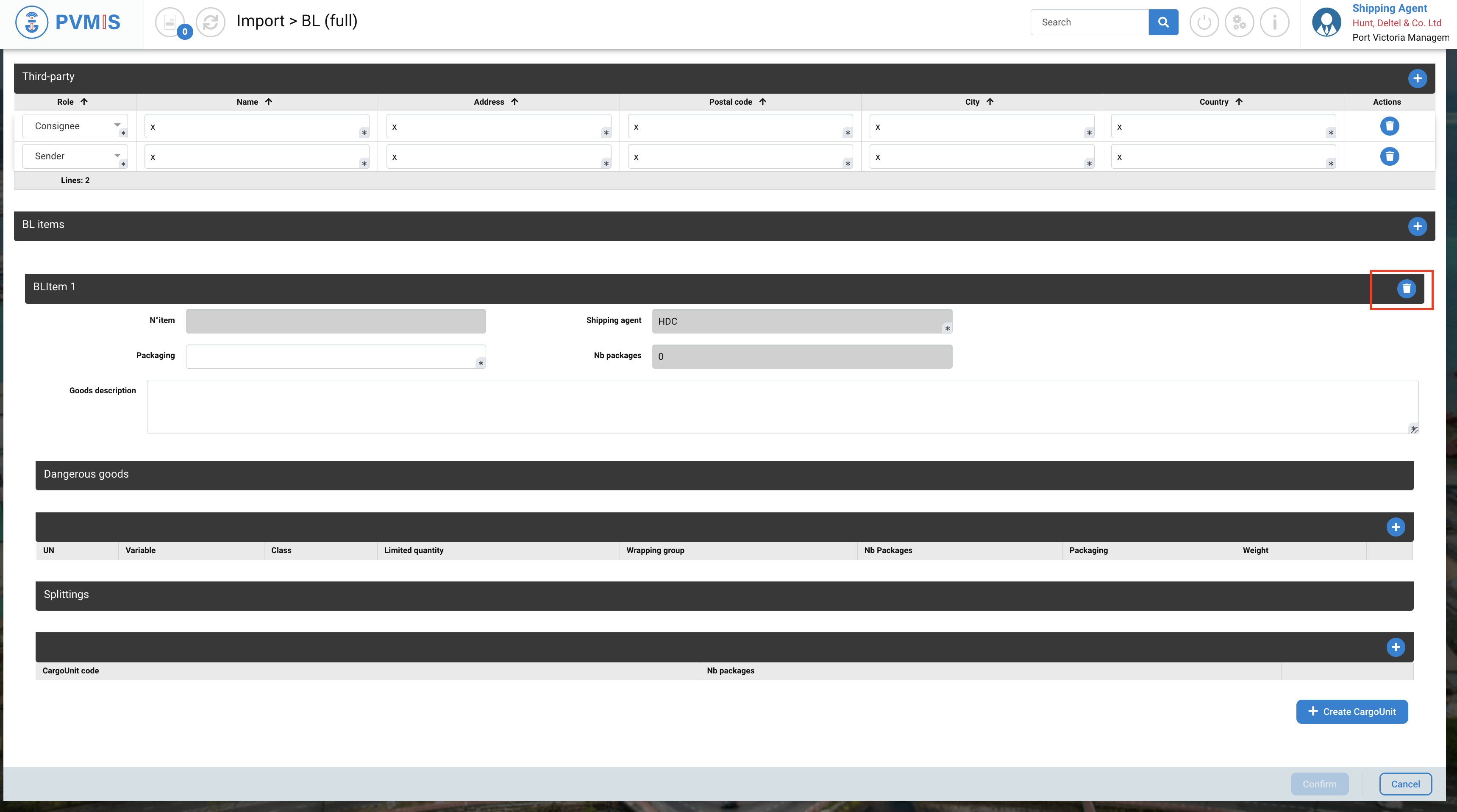
Declare dangerous goods (optional):
Click on + button to add a dangerous good.
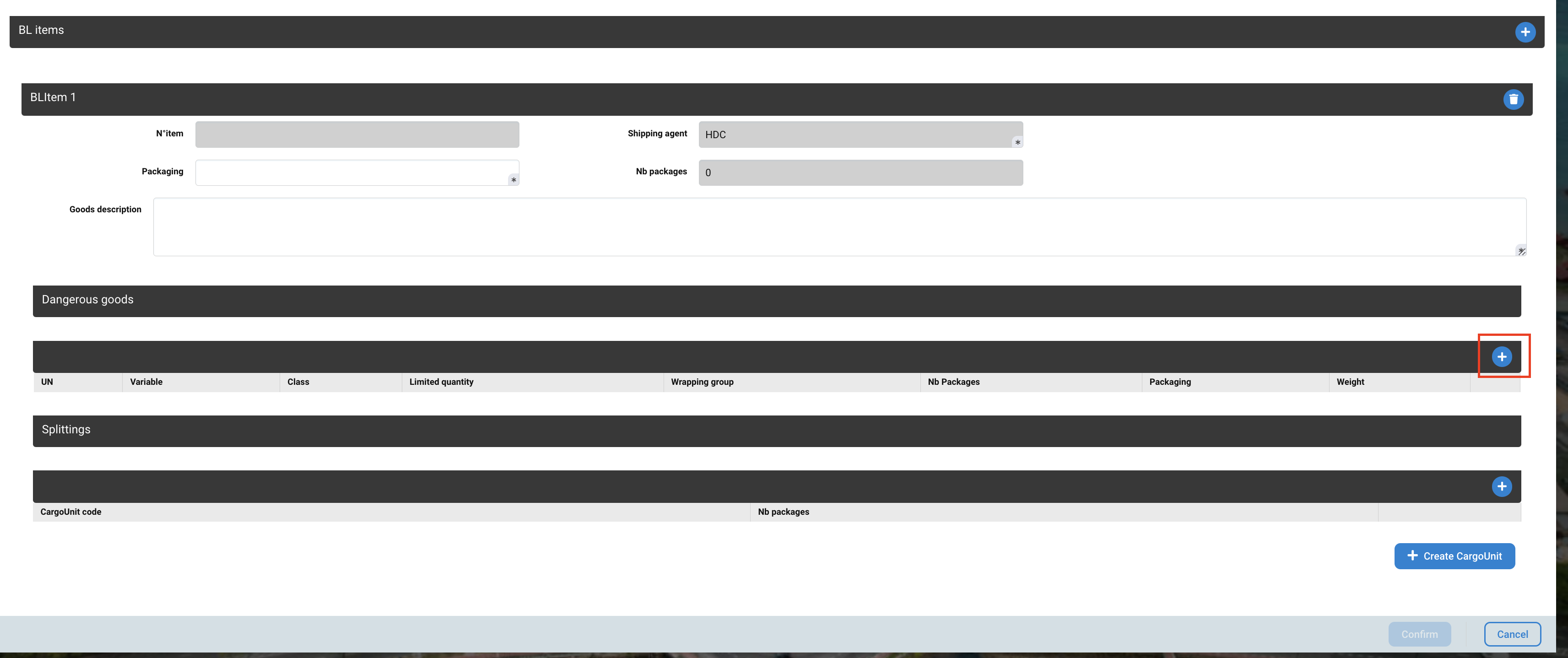
List of fields to declare dangerous goods:

Fields | Description |
|---|---|
UN* | This is the product identifier dangerous. |
Variable* | Select A, B, C, D, E or F. |
Class* | Disabled and pre-filed in condition of the selection of UN field. |
Limited quantity | Switch of “No” by default. |
Wrapping group* | Select I, II or III. |
Nb Packages* | Number of packages of dangerous goods. |
Packaging* | Type of package. |
Weight (kg)* | Weight of the dangerous goods. |
You can delete a line by the icon trash.
Splittings : create a cargo unit
Please specify the cargo unit concerning the goods line in the 'Splittings' section. It is on this cargo unit and BL (Bill of Lading) item link where we will record the number of packages.
Click on + Create CargoUnit button:
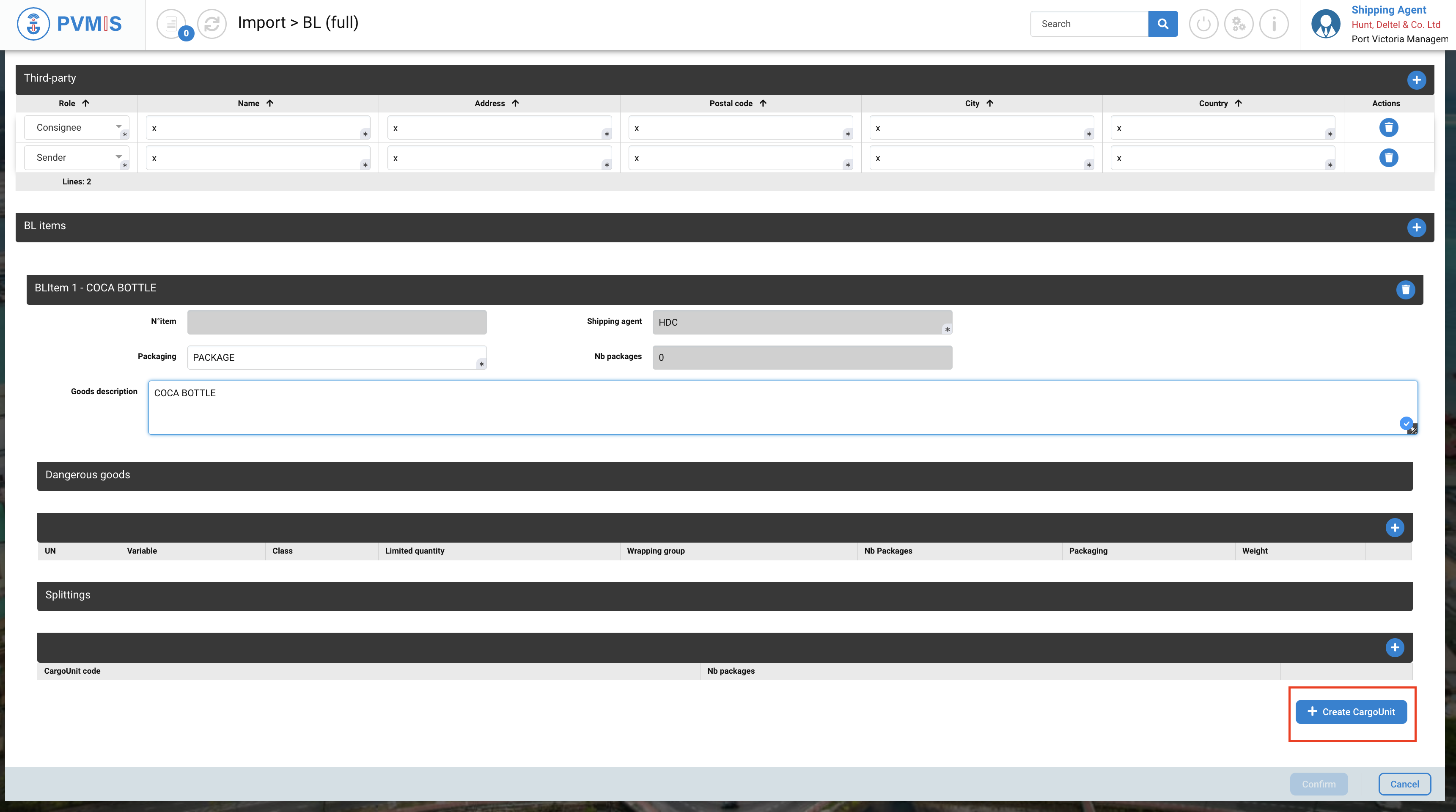
The new CargoUnit is now available, and it is necessary to provide the required information:
Fields | Description |
|---|---|
CargoUnit code* | Cargo number. |
Type of traffic* | Disabled and pre-filed by Export. |
Type* | Type of cargo (Container, Conventional, Vehicle, Bulk). If you select Container, ISO mandatory field will appear. |
Stopover | This is the link of the corresponding stopover. |
Nb packages | Disabled field, will be completed after validation. |
Gross weight (kg) | Gross weight of the cargo. Pre-filed by the informations of BL. |
Net weight (kg) | Net weight of the cargo. Pre-filed by the informations of BL. |
Volume (m3) | Volume of the cargo. Pre-filed by the informations of BL. |
Tare (kg) | Empty container weight. |
Shipping Agent | The field is disabled and already pre-filled with the shipping agent information that was provided during the creation of the scheduled manifest |
Sealed | Sealed cargo number. It’s a multiple fiel, enter the number and select it or push on entter touch. |
ISO* | Conditional display if Container Type is selected. You can enter the text or search in the ISO referential by clicking on eye icon. |
Empty | Switch off “No” by default. |
Complete the form and click on Confirm button:

Once you have created your cargo unit, the allocation is automatically set to “1” if the Type is bulk. You can then adjust the number of packages as needed.
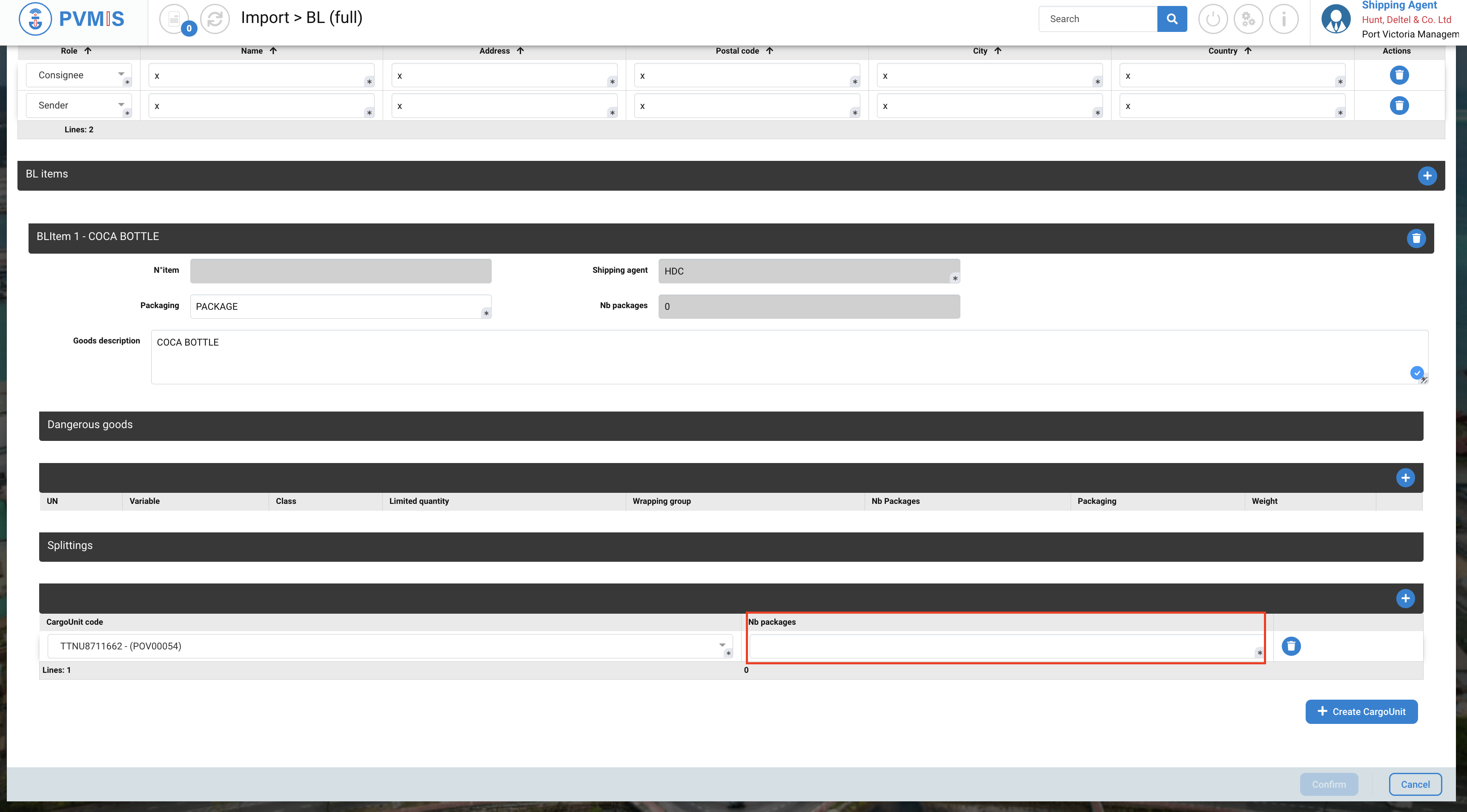
Splittings : an existing cargo unit
Click on + button to add an existing Cargo Unit:

Select the corresponding CargoUnit and complete the number of packages:

If you need to add another item, which means adding another line of merchandise, click on the "+" icon in the "BL Items" section. Once the Bill of Lading is fully filled out, click on "Confirm".

You have entered a bill of lading. Please restart the process from the beginning to initiate a new one.
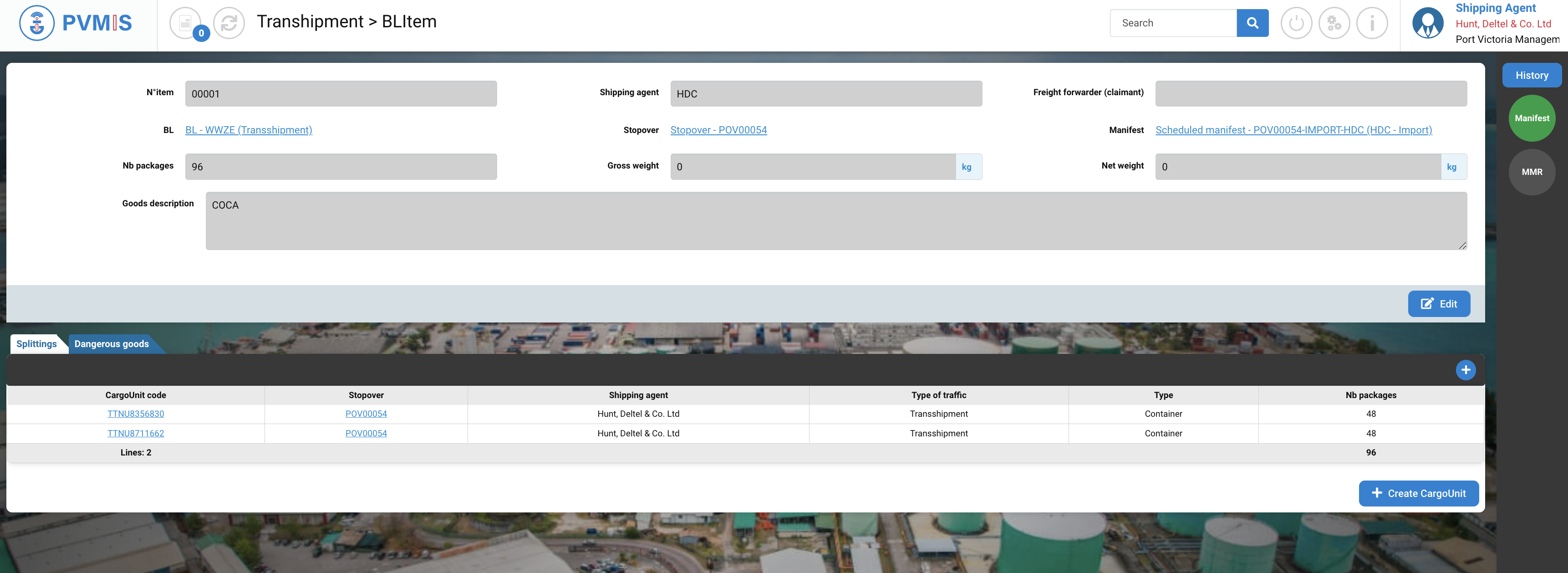
Add BL
On the manifest detail page, you have the option to either enter the full Bill of Lading (BL) directly or create each party separately, depending on your preference and the specific requirements of your process. For this, click on +Add BL.

You will be redirected to the Bill of Lading (BL) form, and you can create it by providing the contract's general information and filling out the Third-party section. After entering all the necessary fields, you can proceed with the BL creation, click on Confirm.
Don’t forget to select Transshipment type of traffic.

Your Bill of Lading has now been created and added to your manifest's Bill of Lading list.

The next step is to create a Bill of Lading item.
Create a Bill of Lading Item
Go to the Bill of Lading detail screen by clicking on the Bill of Lading number:

You can consult information about this BL. Click on Item section:

You are in the Items section, and click on + to add a BL Item.

You will be redirected on the BL Item form, enter the mandatory fields : Packaging and Good description.

After completing, click on Confirm button:

The Bill of of Lading Item is created, and we need to create cargo units liked to it. Click on + icon:

A new line appears on the screen. Select the correct cargo unit and associate the corresponding quantity.
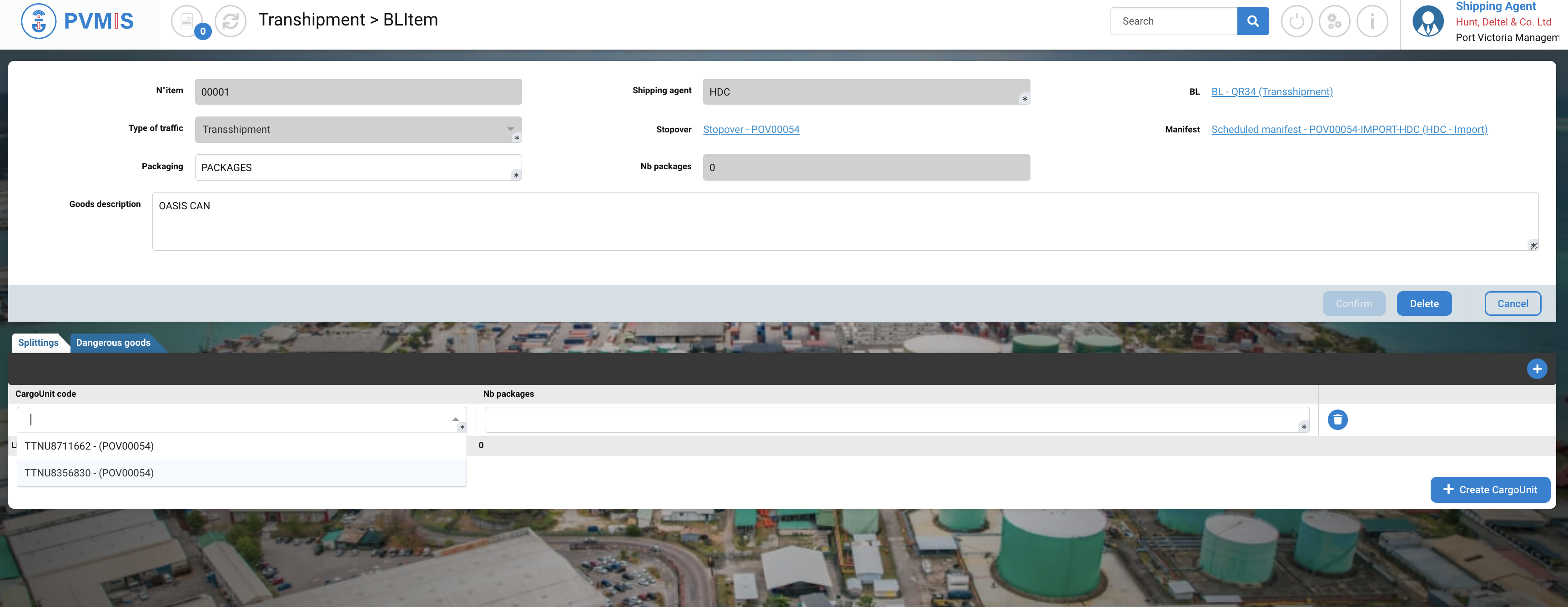
If your cargo unit is not in the list, click on the +Create CargoUnit button and enter the requested information.

Some information is required to create the cargo unit. Fields are mandatory:
Code (e.g. MSCU5285725)
Type (container, conventional, vehicle, bulk)
ISO code (if it's a container)
Gross weight (kg)
Net weight (kg)
After entering the fields, click on Confirm button:

Complete the number of packages:

If you have items classified as Dangerous goods, you can click the Dangerous section:
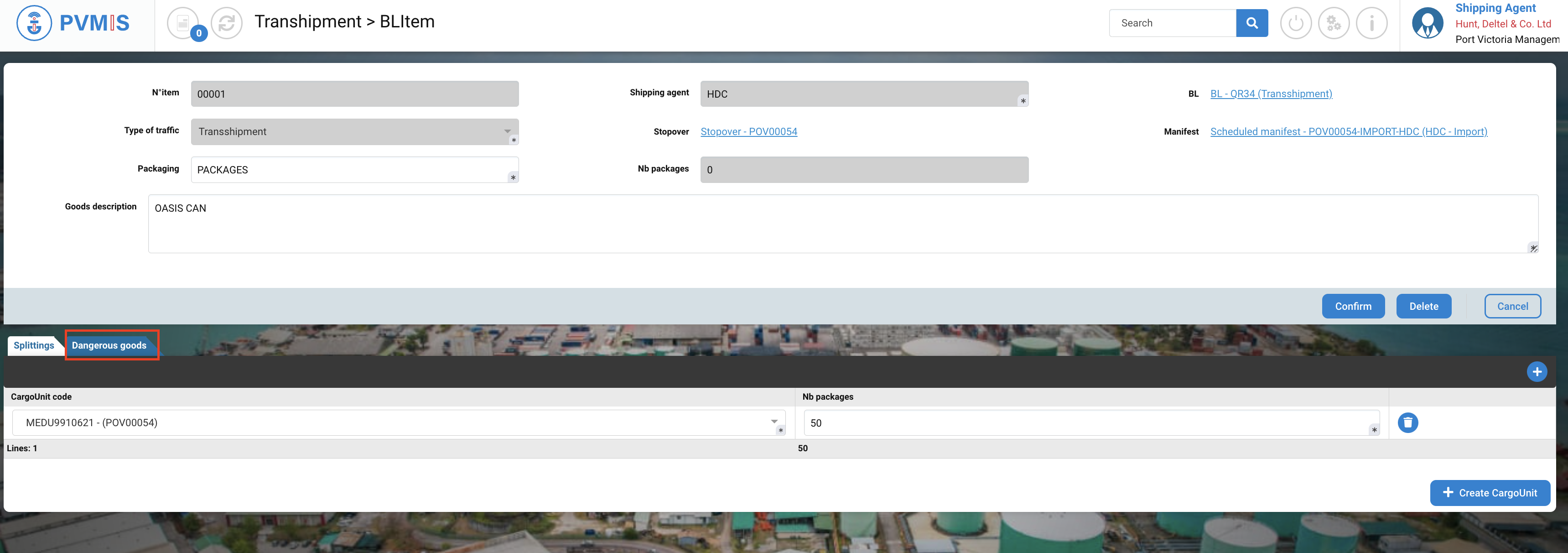
Click on "+" icon in the Dangerous goods section to add them.

Complete the necessary fields:
Fields | Description |
|---|---|
UN* | This is the product identifier dangerous. |
Variable* | Select A, B, C, D, E or F. |
Class* | Disabled and pre-filed in condition of the selection of UN field. |
Limited quantity | Switch of “No” by default. |
Wrapping group* | Select I, II or III. |
Nb Packages* | Number of packages of dangerous goods. |
Packaging* | Type of package. |
Weight (kg)* | Weight of the dangerous goods. |
If you need to remove any of them, you can click on the trash icon to delete the respective entry.

Once you have entered all the information for your cargo unit, click on Confirm button and you'll be taken back to the previous screen.
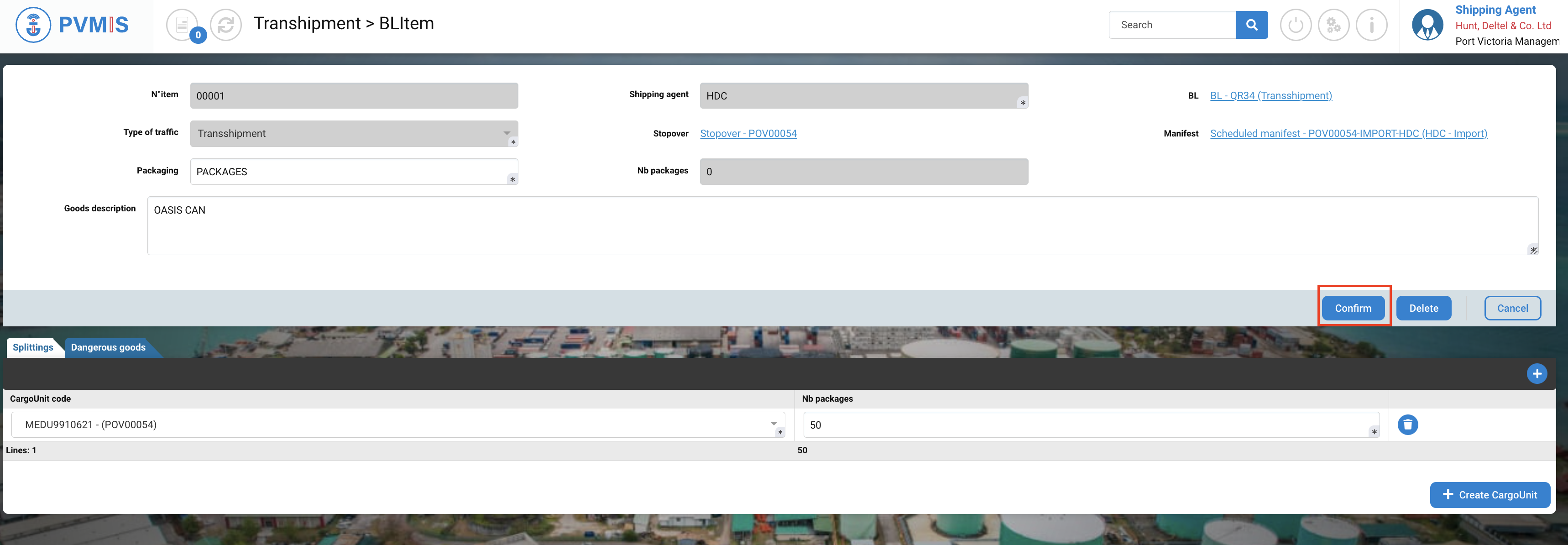
After confirmation, you can consult information about the BL Item and the Cargo Unit is created and add on it.
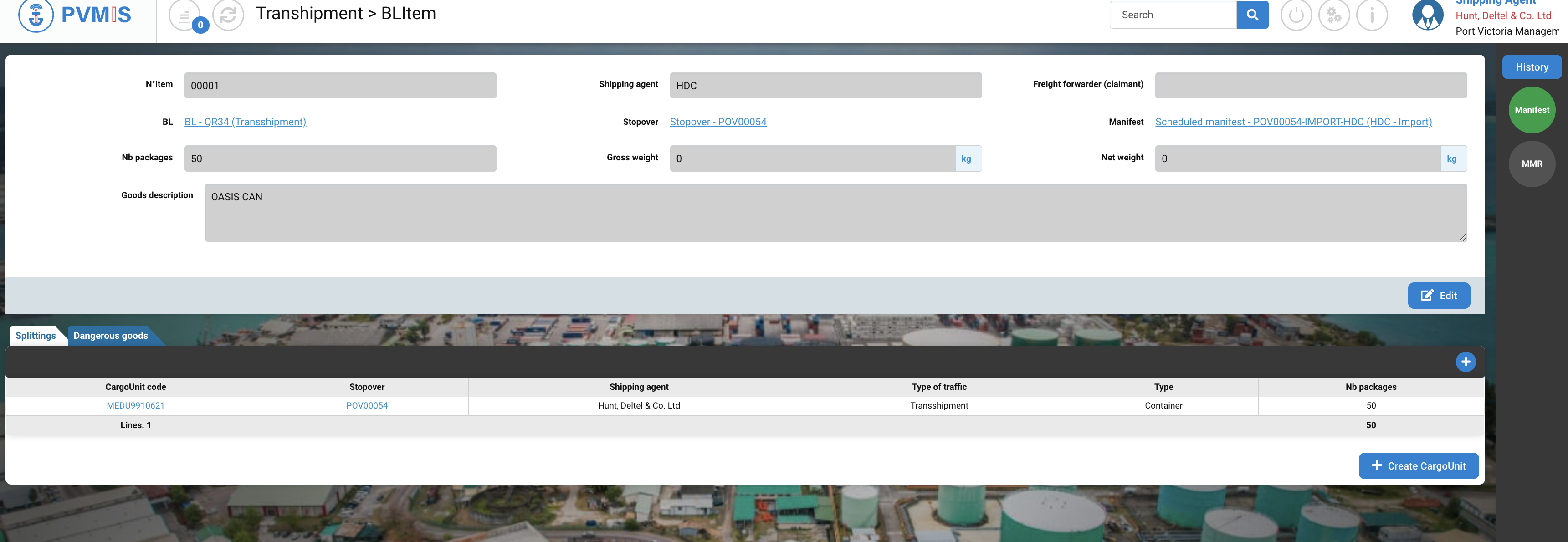
Modify a scheduled manifest
To modify a manifest scheduled for an export stopover, click on the “UnLoading operations” menu in the Import section:

A list of all stopovers within the specified date range is presented. To access the scheduled manifest page, click on the appropriate code in the sixth column of the table.

You can view information about the manifest, and in BLs section, click on BL number.

You are redirected on the Bill of Landing page, click on Edit button:

You are on the Bill of Lading modification page.
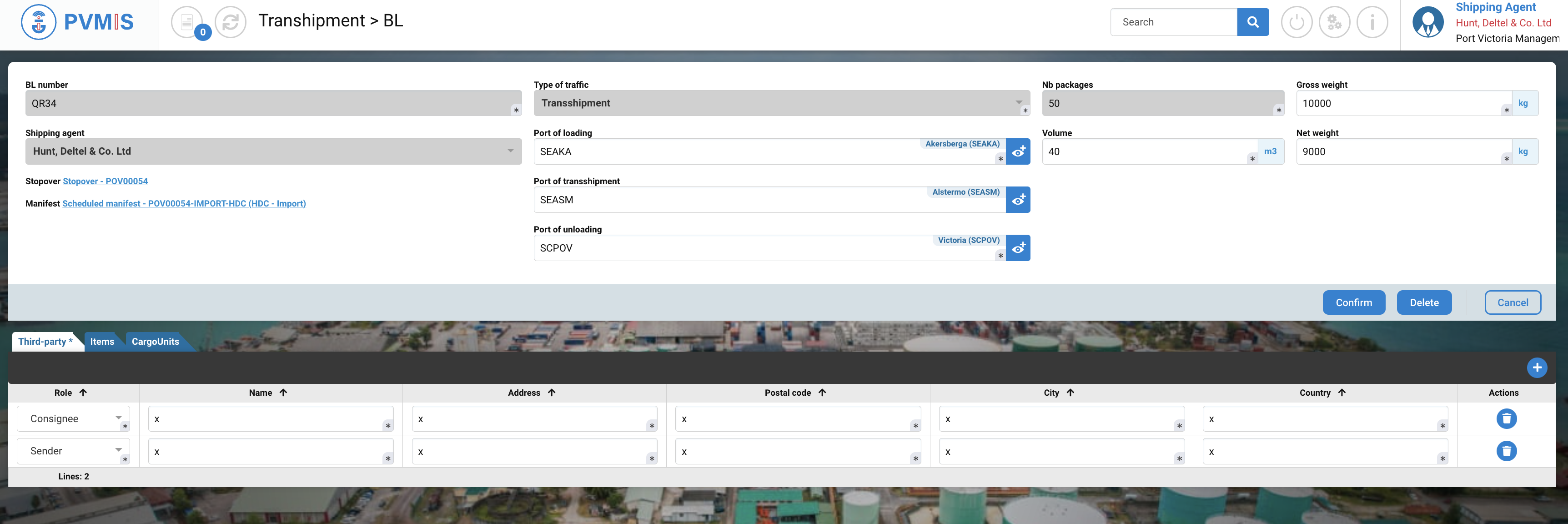
Modify a Bill of Lading Item
If you need to modify a CargoUnit or a Bill of Lading item, select Items section:

Click on edit icon:

On the edit page of BL Item, you can modify informations Goods description field, Splittings and Dangerous section.
Don't forget to save the page, using the Confirm button to save your changes.

Delete a Bill of Lading Item
To delete a Bill of Lading item on the Bill of Landing page, click on Edit button:

Select Items section:

Click on trash icon:
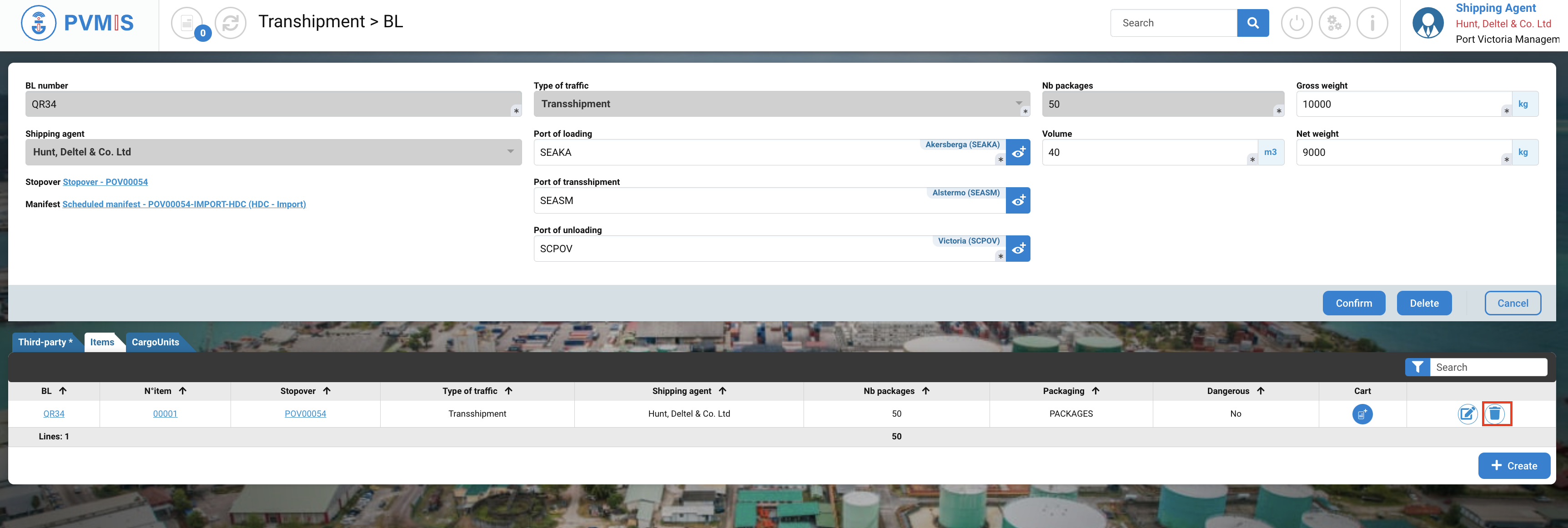
It is no longer possible to modify the manifest once a definitive one has been validated. Once the definitive manifest has been generated, modifications to the programmed manifest will not be accepted. Contact your local customs office to cancel the final manifest.
